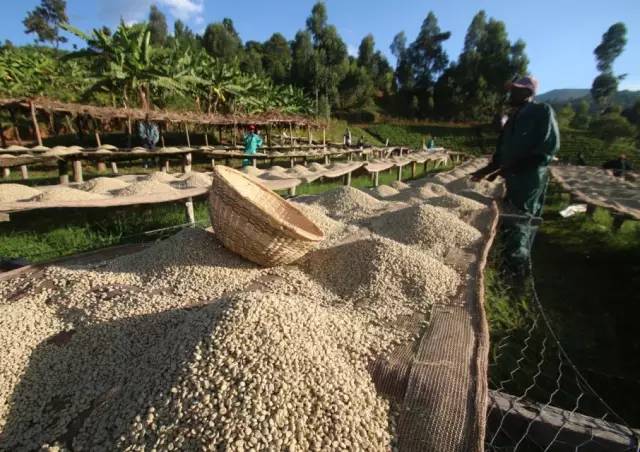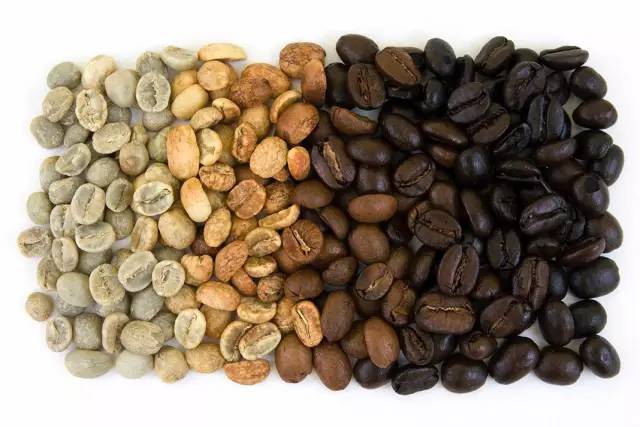Description of the taste of Burundian coffee bean sun-drying area
Follow the caf é (Wechat official account vdailycom) and found that Beautiful Cafe opened a small shop of its own.
Burundi is located south of the equator in east-central Africa. It is bordered by Rwanda to the north, Tanzania to the east and south, Congo (Kinshasa) to the west, and Lake Tanganyika to the southwest. There are many plateaus and mountains in the territory, most of which are composed of the plateau on the east side of the East African Rift Valley, with an average elevation of 1600 meters above sea level, which is known as the "mountain country".
The geographical environment of Burundi is very suitable for coffee cultivation. The territory is mountainous, with suitable altitude and climate. There are no coffee farms in the country and Burundian coffee beans are mainly produced by a large number of small farmers. In recent years, these small producers have become more and more capable of organizing, and most of them will gather around the 160 wet treatment plants in the country, 2/3 of which are state-owned and the rest are privately owned. Each wet treatment plant handles coffee beans from hundreds to up to 2, 000 producers on average.
Wet treatment plants in different production areas will also form their own management integration units, which is basically the Wet treatment Plant Management Association (SOGESTAL). The association's main function is to provide better hardware equipment in the region, so it has contributed to the improvement of the quality of Burundian coffee in recent years. The best coffee in Burundi is washed, mostly bourbon, but there are other varieties. There are many similarities between Burundi and Rwanda; except for similar elevations and coffee varieties, both are landlocked countries, which can be hindered by the rapid export of raw coffee beans to consumer countries at their best. Like Rwanda, Burundian coffee is prone to potato-flavored coffee.

Coffee taste
High-quality coffee from Burundi has a complex berry flavor and a delicious juicy taste.
Producing area
Population: 8749000
2013 production (60 kg / bag): 167000 bags
Burundi has a small territory, so there is no clear scope of production areas. Coffee trees can be planted all over the country as long as the geographical environment and altitude are suitable. The country is divided into different provinces, and coffee gardens gather around the wet treatment plant.
Buyenzi
The largest coffee producing area in the country, bordering Rwanda. Two specific areas, Cayanza Kayanza and Nogoz Ngozi, are the most famous.
The climate in the Cayanza area is extremely mild, with an average temperature of 18 °C, and most small farm estates are located between 1700 and 2000 meters, with the dry season in summer. Coffee from Cayanza scored a high score of 91.09 in the 2015 COE competition.
Nuoguoz is located in the northeast of Burundi, which is similar to the elevation of Cayanza. Although its output is less than that of Cayanza, it has also shown great potential for quality in recent years. In the 2015 COE competition, its best batches scored 88.92%, while other batches from the region also scored more than 85%.

Coffee from Cayanza is drying in the sun.
Kirundo, Bugesera
In northeastern Burundi, the yield is low, but the development potential is good; at an altitude of about 1400-1700 meters, the best score for COE in this producing area is 86.62m.
Muyinga, Bweru
Another producing area in northeastern Burundi bordering Tanzania. The average elevation is 1800 meters above sea level and has its typical Burundian characteristics: mild climate, volcanic soil and high rainfall.
Gitega, Kirimiro
Located in the mountains of central Burundi, the average temperature is 12-18 °C. The annual rainfall is about 1100pp, which is lower than that in other producing areas.
In addition to COE award-winning coffee, this producing area also has a professional coffee laboratory that focuses on the quality control of exported coffee.
Bubanza, Mumirwa
Located in the north of Burundi, bordering Luwanda and the Democratic Republic of the Congo, 1100-2000 meters above sea level, the average temperature is 12-18 °C, and the annual rainfall is about 1100pp.
Important Notice :
前街咖啡 FrontStreet Coffee has moved to new addredd:
FrontStreet Coffee Address: 315,Donghua East Road,GuangZhou
Tel:020 38364473
- Prev

Exclusive solution to the number riddle of authentic Hainan Xinglong Coffee
Two days ago, colleagues on the website published a popular article on Xinglong Coffee, which caused controversy. Careful review is nothing more than talking about the past life of Xinglong Coffee, the varieties of Xinglong Coffee and so on. There are likes and bullets in the articles, as well as advertisements for local coffee. The reading volume of this article is not high, and I never thought that one stone would stir up a thousand waves. Secretary-General Wu of Xinglong Coffee Industry Association through an experienced bank
- Next

There are striking similarities between Burundian coffee and Rwandan coffee.
Follow the caf é (Wechat official account vdailycom) found that the beautiful cafe opened a small shop of its own, formerly known as Uruidi, formed a feudal kingdom in the 16th century, began to be invaded by Britain, Germany and Belgium in the middle of the 19th century, and then fell under the control of the Belgian army in 1916. After World War I, the merged Rwanda-Wulong of the League of Nations bar was assigned to Belgium, and
Related
- Detailed explanation of Jadeite planting Land in Panamanian Jadeite Manor introduction to the grading system of Jadeite competitive bidding, Red bid, Green bid and Rose Summer
- Story of Coffee planting in Brenka region of Costa Rica Stonehenge Manor anaerobic heavy honey treatment of flavor mouth
- What's on the barrel of Blue Mountain Coffee beans?
- Can American coffee also pull flowers? How to use hot American style to pull out a good-looking pattern?
- Can you make a cold extract with coffee beans? What is the right proportion for cold-extracted coffee formula?
- Indonesian PWN Gold Mandrine Coffee Origin Features Flavor How to Chong? Mandolin coffee is American.
- A brief introduction to the flavor characteristics of Brazilian yellow bourbon coffee beans
- What is the effect of different water quality on the flavor of cold-extracted coffee? What kind of water is best for brewing coffee?
- Why do you think of Rose Summer whenever you mention Panamanian coffee?
- Introduction to the characteristics of authentic blue mountain coffee bean producing areas? What is the CIB Coffee Authority in Jamaica?

